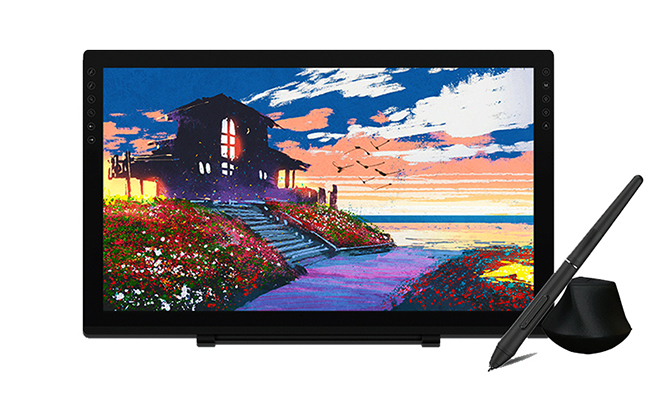While the Starry Night by Van Gogh in art textbooks still presents itself with the graininess of printing, and while children's paintbrushes still struggle to mix the ideal gradient colors, digital art tablets, glowing softly from their screens, are emerging as the most steadfast pioneers in the innovation of art education. They are not cold tools, but a pair of gentle hands, gently lifting the flickering artistic flames in every child's heart.

One of the most touching scenes in the studio: a girl who once stared blankly at a blank piece of paper tried twenty shades of blue with a stylus on the tablet, finally capturing the color of her grandmother's scarf as she remembered it. In the reflection of the screen, her eyes shone brighter than any paint; a boy who always said "I can't draw it right" discovered that the tablet's undo button could 包容 all mistakes, so he boldly drew his kitten with wings, laughing and saying, "This is my cat's dream." The most precious gift of digital art tablets is giving every child the "courage to make mistakes" — it is like a patient mentor, never criticizing clumsiness, only encouraging exploration, turning art education from "having to draw correctly" to "drawing freely as I am."
It has broken many boundaries in art education. Children in rural schools no longer have to imagine the magnificence of Dunhuang murals from blurry picture books; with a tap on the cloud material library, they can use layer painting functions to copy the flowing ribbons of flying apsaras, feeling the rhythm of every stroke. Children in special education classes, using adapted auxiliary pens to press on the tablet, make 原本 trembling lines steady. When they drew a complete sun for the first time, they patted the edge of the tablet, as if sharing joy with a new friend. A teacher once said, "I used to worry that equipment limited children's expression, but now I realize that the tablet is like a versatile treasure chest, able to tailor a key to the door of art for every child."
This pioneer is never a negation of tradition, but a fulfillment of love. It gives new layers to the spread of watercolors on the screen, allows the light and shadow of sketches to be precisely adjusted with sliders, yet retains the subtle resistance of a pencil rubbing on a digital tablet, letting children know that the "warmth of brushstrokes" has never faded. When a child pastes a cartoon character drawn on the tablet onto their home window with cut paper; when an old teacher, wearing reading glasses, learns to use the annotation function to write "The light and shadow here are like Monet's water lilies" next to a student's digital work, we see the handshake between a brush and a stylus, the reconciliation between a paint tube and a charging cable — the essence of art has never been a contest of tools, but the transmission of emotions, and digital art tablets have given this transmission a broader runway.
The direction it leads is never to turn all works into exquisite digital images, but to return art education to the original intention of "educating people." Here, introverted children can express unspoken words through illustrations, naughty boys can release excess energy in doodles, and every child can find a unique way to dialogue with the world through the touch of fingertips and screen. Just as a ship needs a compass to guide its direction, art education also needs such a pioneer to tell us: the true meaning of art has never been to draw a standard answer, but to let every soul bloom with its own unique color.
Digital art tablets, carrying countless children's drawings, are sailing towards a broader artistic ocean. They have turned art classes from "a specialty of the few" into "a right for all," like the light in the pioneer's hand, not only illuminating the way forward, but also making every fellow traveler believe: as long as you pick up a pen (whether wooden or electronic), everyone can draw their own sea of stars.